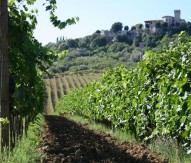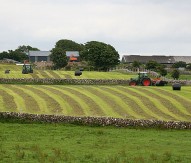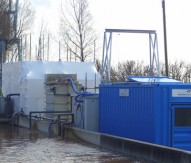
IPM’s European Innovation Partnership
Launched in 2010 as part of the Europe 2020 strategy, the Innovation Union focuses on the key challenges facing European society, in particular climate change, energy, food security and an ageing population. Many of these long-term problems are now being realised in the Societal Challenges pillar of Horizon 2020.
The Innovation Union introduces the concept of the European Innovation Partnership (EIP), a pioneering initiative facilitating co-operation and knowledge sharing between national and regional stakeholders in the public and private sectors. The EIP will focus on addressing the key challenges facing society and, it’s hoped, will also enhance Europe’s competitiveness.
EIPs will be a vital approach in facilitating collaboration in Horizon 2020 and will assist in the co-ordination of research in the Societal Challenges pillar as well as other EU policies and programmes. One objective in the Societal Challenges pillar likely to benefit from the development of an EIP is the ‘Food security, sustainable agriculture, marine and maritime research and the bio-economy’ objective and in particular, the area of Integrated Pest Management (IPM).
Taking place at Riva del Garda in northern Italy and attended by Pan European Networks, the ‘Future IPM in Europe’ conference centred on the challenges of developing an integrated pest management system. The conference focused on ‘reducing pesticide use-and-risk in European IPM’ and the implementation of Directive 2009/128/EC establishing a framework for community action to achieve the sustainable use of pesticides.
Addressing delegates in the opening plenary session, legislative officer Patrizia Pitton, of the Chemicals, Contaminants, Pesticides Unit of the European Commission’s Directorate-General for Health and Consumers, summarised how an EIP will help reduce the innovation gap between key agricultural actors and increase the exchange of research information, a key goal of Horizon 2020.
“The crucial role of European innovation and research,” Pitton advised, “is preparing the EU to tackle future challenges, and in particular, facilitate economic progress. The CAP reform gives innovation a key role in sustainable agriculture and in particular, rural development. The allocated budget for research and innovation in the field of food-security, bioeconomy and sustainable agriculture in Europe 2020 is €4.5bn and despite a recent reduction, it remains a high amount.
“Europe 2020’s flagship initiative, the Innovation Union, specifies EIPs as a new tool for fostering innovation. An EIP will link the research and farming sectors, encouraging the wider use of available of innovation measures and promote the faster transposition of results from the research world to the agricultural world.”
And she added: “An EIP on agricultural productivity and sustainability will promote a resource-efficient, productive, low-emission, climate-friendly and resilient agricultural sector, working in harmony with limited natural resources. It will help deliver a safe and steady supply of food, feed and biomaterials as well as improve processes to preserve our environment and adapt to climate change. The EIP will also build bridges between scientists, technologists, farmers, businesses and advisory services by better linking the research and agricultural sectors whilst encouraging the wider use of available innovation measures.”
Crossing the ‘valley of death’
The introduction of EIPs sees a new approach in the exchange of information between key actors. Known as the ‘interactive innovation model’, it is considered much more than simply crossing the ‘valley of death’ more quickly.
Pitton stated: “The ‘interactive innovation model’ goes far beyond speeding up the transfer from laboratory to practice through diffusion of new scientific knowledge. The EIP focuses on forming partnerships and uses a bottom-up approach, linking famers, advisers, researchers, businesses and other actors in ‘operational groups’. This ‘knowledge exchange’ will generate new insights and ideas whilst moulding existing tacit knowledge into focused solutions that can be more quickly put into practice. This approach will stimulate innovation from all sides and will help to target the research agenda.
“The main objective is to share knowledge and allow the further development of IPM. The ‘bottom-up approach’ is used to define the composition and operational purpose of a single ‘operational group’. Each ‘operational group’ must establish its plan and outline its anticipated results, sharing them within the EIP network. There is also the possibility of combining the co-operation in ‘operational groups’ with other measures, including knowledge transfer, advisory services and investment aid,” she continued.
Co-operation
The development of the EIP network will further facilitate co-operation in the network whilst encouraging knowledge sharing and the better transfer of scientific and innovation results amongst various actors.
In a conference document, the European Commission defined how the EIP Network would work: ‘The network facility will work as a mediator enhancing communication between science and practice and fostering co-operation. It will support the work of ‘operational groups’ through focus groups, seminars and workshops, the establishment of data bases, support for partnering and help desk functions. In order to widen the knowledge base and sharing of experience, operational groups would report back to the EIP network about their actions. The EIP network will facilitate the effective flow of information beyond the local and regional level of each operational group.’
Similar to the development of ‘operational groups’, multi-actor projects will also be introduced in Horizon 2020 to help the dissemination of information. According to Pitton, multi-actor projects will play a key role in the next framework programme.
“A multi-actor project will ensure the necessary cross-fertilising interactions between researchers, businesses, farmers, advisors and end users. The impact and dissemination of research results will be actively supported through specific actions on communication, knowledge-exchange and the involvement of various actors throughout the projects. This approach matches the concept of operational groups under the EIP interactive innovation model.”
Horizon 2020’s focus on encouraging co-operation, facilitating the better transfer of knowledge and tackling the main challenges facing European society is realised through the development of the EIP. This, in addition to many other new measures, will help bridge the gap both in the valley of death and the problems in the dissemination of information in Europe.
Patrizia Pitton
Directorate-General for Health and Consumers, European Commission




